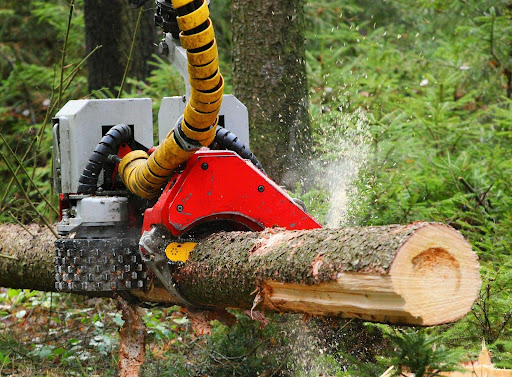Every business thrives on efficiency, and when it comes to equipment selection, even seemingly small decisions can have big consequences. Whether you’re running a landscaping company, a municipal service team, or a rural property business, aligning the right tool to the right job is essential. It starts with asking the right questions, what’s the goal, what’s the material, and how can the job be done safely and cost-effectively? For many, comparisons like the Equipment Outfitters wood chipper vs shredder breakdown help demystify the process before they invest.
Defining Your Business Purpose
Not all businesses that handle brush, wood, or yard debris have the same objective. Some need to reduce volume, others want to produce usable mulch, and many just need to dispose of material as quickly as possible. Each goal suggests a different machine:
- Wood chippers are best for businesses that process thick branches and want faster throughput.
- Shredders, on the other hand, handle leaves, twigs, and softer debris and are often favored when mulch or compost is the final product.
Defining your core need makes the selection process far easier. Are you managing storm cleanup or prepping soil for flower beds? Are you on a schedule, or is efficiency measured in fuel savings?
Understanding Equipment Design and Capacity
It’s easy to assume all machines in this category are similar, but subtle design differences can mean the world in operation. Chippers typically feature a heavier flywheel and blade configuration meant for slicing dense material. In contrast, shredders often rely on flails or blunt tearing mechanisms to process softer organic matter.
Selecting a machine that exceeds your average job load in terms of capacity ensures durability, but overshooting too far can lead to wasted fuel, oversized trailers, or added training complexity.
When matching design to function, consider:
- Branch diameter: If you’re regularly handling limbs over 3 inches, a chipper is essential.
- Debris type: A shredder suffices for fall cleanup or residential leaf work.
- Feed method: Gravity-fed models require less training but offer less control; hydraulic feed adds efficiency but raises cost and maintenance.
Safety Isn’t Optional
No matter the model, operator safety should guide every decision. Machines used outdoors in unpredictable environments should have clear emergency shutoffs, protective shielding, and a strong maintenance record.
According to OSHA, machine guarding is one of the most-cited violations for industrial tools. Poor safety practices can lead to injury, downtime, and regulatory issues, none of which a growing business can afford. Prioritize equipment with safety-forward designs that don’t sacrifice user efficiency.
Involving employees in the selection process can also elevate safety performance. Operators who feel ownership over the tools they use daily are more likely to follow safety checks, report faults early, and adhere to proper procedures.
Durability vs Cost: Knowing Where to Invest
It’s tempting to base the decision on price alone. But consider how many hours a year you expect to run the machine. A lower-end shredder might save a few hundred dollars upfront but require twice as many repairs or replacements over time.
Many buyers now evaluate equipment on “total cost of ownership”, a measure that includes:
- Upfront price
- Maintenance intervals and part costs
- Fuel or electric usage
- Lifespan and resale value
If your machine will be used more than 100 hours annually, durability should matter more than sticker shock. Look for models with accessible grease points, replaceable blades or flails, and non-proprietary parts.
How Environmental Factors Shape Your Choice
Where you operate is just as important as what you’re processing. Rural businesses may favor gas-powered units for their portability, while urban contractors might lean toward electric or battery-powered options to reduce noise and emissions.
Working in varied terrain? Ground clearance, wheel design, and towing capability could be the tie-breakers.
Climate also plays a role. In cold regions, easy-start features or sealed fuel lines become key. For hot environments, cooling systems and ventilation design may matter more.
Environmental policies are tightening in many cities and states. Equipment with lower emissions or sustainable design may qualify for grants or incentives. Always review your local codes before buying.
Don’t Forget Storage and Transport
You’ve made the perfect choice, but can it fit through the gate at your client’s property? Will it need a trailer? Is it light enough for one person to maneuver, or does it require a team?
Storage space is another consideration. Many small-business owners have limited garage or yard space. Fold-down hoppers, removable chute systems, or vertically storing models can solve big problems in tight quarters.
Transport time also affects your margins. If it takes an extra 20 minutes to load, secure, and unload each time, that’s valuable labor lost.
Operator Skill Level and Training Time
A vital but often overlooked factor: who will use the machine? Are they mechanically inclined, or are they seasonal workers with minimal technical experience?
The best tool is the one your team can use confidently and safely without a steep learning curve. Simplified controls, intuitive safety systems, and reliable customer support all contribute to smoother onboarding.
Ask your vendor for access to manuals before buying. A well-written guide is often the first signal of how user-friendly the machine really is.
Planning for Future Growth
Your current workload might suggest a small-capacity shredder, but what about next season? Are you expanding services? Taking on contracts with higher debris output?
Some businesses smartly plan ahead, choosing slightly larger models now to avoid a second purchase in a year or two. That doesn’t mean maxing out your budget, just selecting a model with modular features or add-on capabilities.
Some hybrid chipper/shredder units can scale up, offering both fine mulch and coarse chips, giving you flexibility without doubling your equipment.
Making the Final Call
It may sound counterintuitive, but the more you know about your day-to-day workflow, the simpler the final decision becomes. If you consistently operate in tight, residential zones with lots of leaves and twigs, then a shredder is the way to go. If you’re regularly processing thick branches and tree waste, a chipper makes more sense.
Still undecided? That’s where tools like the Equipment Outfitters comparison come in. Their breakdown of wood chipper vs shredder capabilities, applications, and design distinctions helps clarify options for business owners across industries.
Don’t treat equipment like a one-size-fits-all solution. The best fit depends on your jobs, your team, your terrain, and your vision for the future. By asking the right questions and reviewing the right sources, you’re already halfway there.




